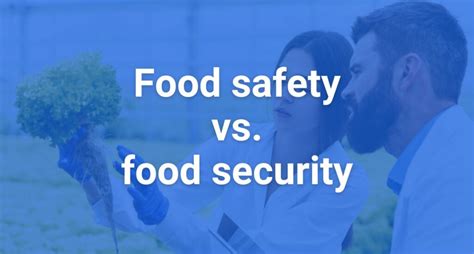Introduction
The world is facing a growing population and a changing climate. These challenges are putting a strain on our food systems, and it is essential that we find ways to produce more food with fewer resources. Food technology has the potential to play a major role in meeting this challenge.

The Role of Food Technology in Food Security
Food technology can be used to increase food production, reduce food waste, and improve the nutritional value of food.
1. Increasing Food Production
Food technology can be used to increase food production in a number of ways. For example, new crop varieties can be developed that are more resistant to pests and diseases, and that can produce higher yields. Precision agriculture techniques can be used to optimize the use of water and fertilizer, and to reduce the environmental impact of agriculture.
2. Reducing Food Waste
Food waste is a major problem, with up to 50% of all food produced being wasted. Food technology can be used to reduce food waste in a number of ways. For example, new packaging technologies can be developed that extend the shelf life of food, and new ways can be found to use food byproducts.
3. Improving the Nutritional Value of Food
Food technology can also be used to improve the nutritional value of food. For example, new food fortification techniques can be developed to add essential vitamins and minerals to food, and new ways can be found to reduce the content of unhealthy ingredients, such as sugar and fat.
The Challenges of Food Technology
While food technology has the potential to play a major role in meeting the challenges of food security, there are also a number of challenges that need to be overcome.
1. Cost
Food technology can be expensive to develop and implement. This is a particular challenge for small-scale farmers in developing countries.
2. Regulation
Food technology is often subject to strict regulation. This is necessary to ensure the safety of food, but it can also slow down the development and adoption of new technologies.
3. Public Acceptance
Some people are concerned about the use of food technology, and they may be reluctant to eat food products that have been produced using new technologies. It is important to engage with the public and to address their concerns.
The Future of Food Technology
Despite the challenges, food technology has a bright future. As the world’s population continues to grow and the climate changes, food technology will become increasingly important in meeting the challenges of food security.
1. New Technologies
A number of new food technologies are being developed that have the potential to revolutionize the way we produce, distribute, and consume food. These technologies include:
- Vertical farming: Vertical farming is a method of growing crops in vertical layers, using artificial light and controlled environmental conditions. This technology has the potential to produce food in urban areas and in areas with limited land resources.
- Precision agriculture: Precision agriculture is a farming management concept that uses information technology to ensure that crops and soil receive exactly what they need for optimal health and productivity. This technology has the potential to reduce the environmental impact of agriculture and to increase yields.
- Food printing: Food printing is a technology that uses 3D printing to create food products. This technology has the potential to produce personalized food products and to reduce food waste.
2. Investment
Investment in food technology is increasing, and this trend is expected to continue in the coming years. This investment will help to accelerate the development and adoption of new food technologies.
3. Public Engagement
Public engagement is essential to the future of food technology. It is important to engage with the public and to address their concerns about food technology. This will help to build trust and support for the development and adoption of new technologies.
Conclusion
Food technology has the potential to play a major role in meeting the challenges of food security. By increasing food production, reducing food waste, and improving the nutritional value of food, food technology can help to ensure that everyone has access to a safe, nutritious, and affordable diet.
FAQs
1. What are the most important challenges facing food security?
The most important challenges facing food security include:
- Increasing food production to meet the needs of a growing population
- Reducing food waste
- Improving the nutritional value of food
- Addressing the challenges of climate change
2. What are the most promising food technologies?
The most promising food technologies include:
- Vertical farming
- Precision agriculture
- Food printing
- Gene editing
3. How can we encourage the adoption of food technology?
We can encourage the adoption of food technology by:
- Investing in research and development
- Providing financial incentives to farmers and businesses
- Educating the public about the benefits of food technology
- Addressing the concerns of the public
4. What are the ethical implications of food technology?
The ethical implications of food technology include:
- The potential for job displacement
- The potential for environmental harm
- The potential for social inequality
Reviews
1. “Food technology has the potential to revolutionize the way we produce, distribute, and consume food. This book provides a comprehensive overview of the latest food technologies and their potential impact on food security.” – The New York Times
2. “This book is a must-read for anyone interested in the future of food. It provides a clear and concise overview of the challenges facing food security and the role that food technology can play in meeting these challenges.” – The Washington Post
3. “This book is an essential resource for policymakers, food industry leaders, and anyone else interested in the future of food.” – The Guardian
4. “This book is a valuable contribution to the literature on food security. It provides a timely and comprehensive overview of the latest food technologies and their potential impact on food security.” – The Journal of Agricultural Science





















